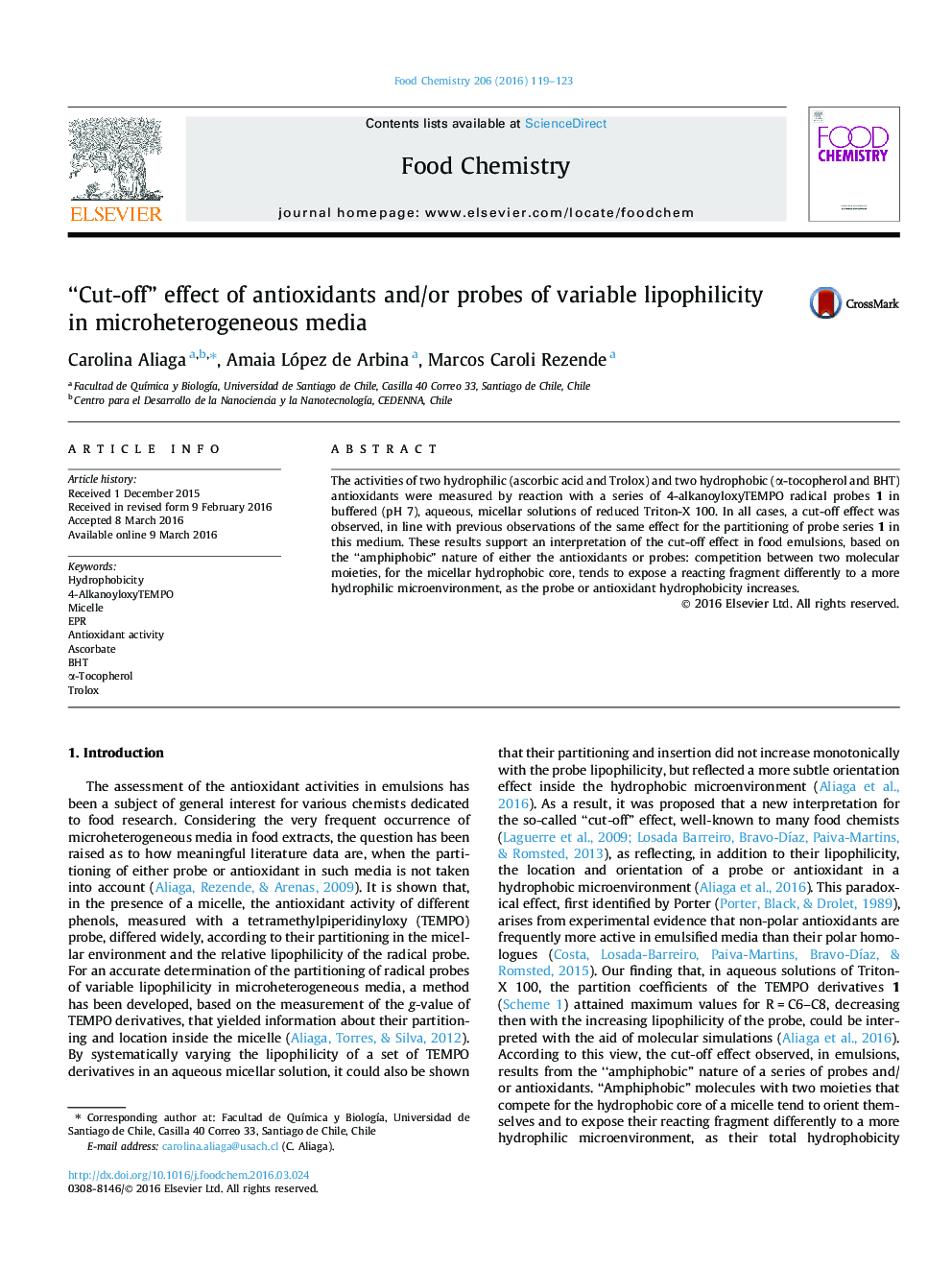| Article ID | Journal | Published Year | Pages | File Type |
|---|---|---|---|---|
| 1184236 | Food Chemistry | 2016 | 5 Pages |
•Activities of 4 antioxidants in micelle were measured with TEMPO derivatives.•Hydrophilic (ascorbate, Trolox) and hydrophobic (α-tocopherol, BHT) were evaluated.•A “cut-off” effect for C6–C8 chain-length probes was observed for all antioxidants.•C6–C8 were most reactive with hydrophobic and least with hydrophilic antioxidants.•The “cut-off” effect is due to the “amphiphobic” nature of the TEMPO derivatives.
The activities of two hydrophilic (ascorbic acid and Trolox) and two hydrophobic (α-tocopherol and BHT) antioxidants were measured by reaction with a series of 4-alkanoyloxyTEMPO radical probes 1 in buffered (pH 7), aqueous, micellar solutions of reduced Triton-X 100. In all cases, a cut-off effect was observed, in line with previous observations of the same effect for the partitioning of probe series 1 in this medium. These results support an interpretation of the cut-off effect in food emulsions, based on the “amphiphobic” nature of either the antioxidants or probes: competition between two molecular moieties, for the micellar hydrophobic core, tends to expose a reacting fragment differently to a more hydrophilic microenvironment, as the probe or antioxidant hydrophobicity increases.
Graphical abstractFigure optionsDownload full-size imageDownload as PowerPoint slide
